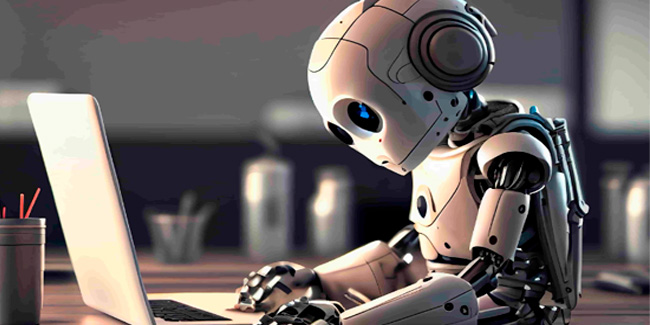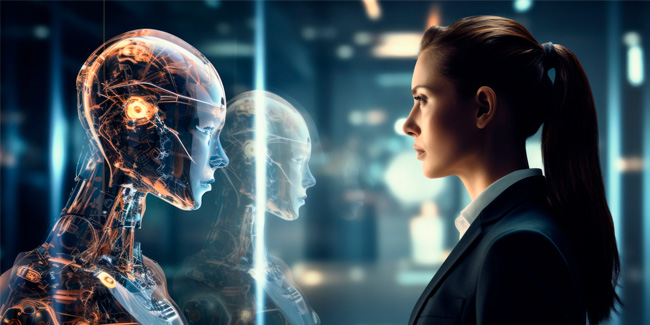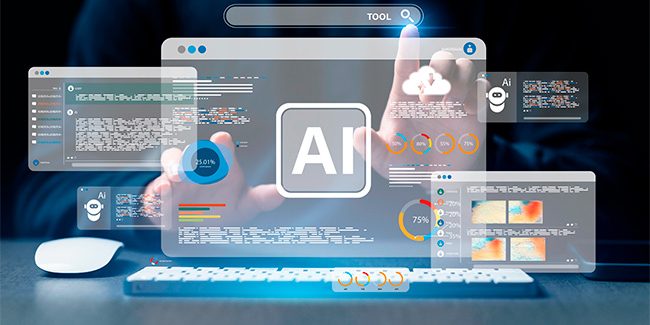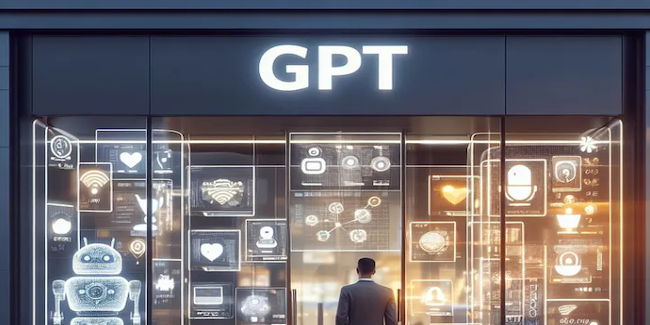

AI Job Shift: Industries Job Market Transformation


The topic of AI job replacement is widely discussed nowadays, as people worldwide are worried about possible jobs loss. Moreover, the rise of artificial intelligence has significantly changed many industries, shaking up job markets and how money flows. To find the perspective and ways to stay afloat, it becomes increasingly important to understand AI’s impact on the job market. In today’s article, we’re about to look into changes and ways to overcome AI job replacement.
What’s AI and its Impact on Employment
Indeed, technological revolutions have always had an impact on economics and job markets, making notable changes and changing trends. To understand it better, let’s take a look at the Industrial Revolution of the 18th and 19th centuries, bringing mechanization and steam power, to the 19th and 20th centuries bringing electricity and assembly line production.
The late 20th century became the information age, leading to the advent of computers and digital technologies. Consequently, some jobs were replaced, sparking concerns about job roles in the age of transformation.
The 21st century became the age of AI, a simulation of human intelligence processes by computer systems. Over time, AI becomes “smarter” by adopting problem-solving, perception, and decision-making features. AI found its application in almost every job sector, making people almost an unnecessary factor.
But, despite all those changes, AI brought not only disruption but opportunities. People have learned valuable lessons from past disruptions. Technological advancements also led to the creation of new job opportunities.
Possible scenarios of AI job replacement
Despite worries from many, tech giants like Google, Amazon, and Facebook are leading the charge in AI development, gaining wealth and dominance in the market. The rapid expansion of these companies has worsened income inequality, providing significant benefits to their shareholders and executives. Now, let’s analyze some statistics regarding job displacement, sparking worries about job security among numerous workers.
Due to Gitnux, an independent market research platform, there are the following development scenarios:
- By 2025, AI may supplant around half (52%) of the world’s jobs.
- By 2030, AI may take over approximately 800 million job roles globally.
- One out of every four jobs in the United States faces a high risk of automation.
- Nearly half (45%) of all job tasks have the potential for complete automation.
- Approximately 30% of the specific duties within the majority (60%) of jobs could be automated.
- By 2030, responsibilities will be almost evenly divided between tasks performed by AI and those carried out by humans.
At Introduct, we’re striving to keep up with the times. Accordingly, our dedicated teams of developers adopt modern AI tools to make the job more quality and improved.
Jobs that are at high risk of AI replacement
After consulting with experts and conducting further research, Business Insider released the following list of jobs most susceptible to AI replacement:
- Tech jobs
Coders, computer programmers, software engineers, and data analysts
AI tools may eliminate the demand for coding and computer programming expertise due to their efficiency and accuracy. Nevertheless, AI is more likely to help coders rather than replace them at all. - Media related jobs
Advertising, content creation, technical writing, journalism
AI tools are great at analyzing and understanding large amounts of text-based data and information. Otherwise, the majority of work done by content creators is not automatable. - Legal industry jobs
Paralegals, legal assistants
These jobs involve consuming vast information, summarizing it, and presenting it in legal documents. Despite these factors, they require a degree of human judgement anyway. - Market research analysts
AI is good at analyzing data and predicting outcomes, so AI may fully replace these jobs. - Teachers
AI tools may easily teach nowadays. Nevertheless, human connection and interpersonal interaction will remain in need. - Graphic designers
Many AI tools nowadays can create whatever you want, but designers still need to adjust the created content to specific needs and requirements. - Accountants
The same for analysts, some processes may be automated, but still need adjustments. - Customer service agents
Robots and chatbots are all about replacing customer service agents.
This list also includes some other jobs like cashiers, bank clerks and tellers, pharmacy technicians, pilots, which are in the process of replacement nowadays. You can already see a lot of self-service checkouts and AI consultants.
AI and Human Partnerships — myth or new reality?
Worries about AI replacing current jobs are valid but can be addressed. It’s a double-edged sword. Human factors are necessary for correct AI tools job adjustments, as there are different needs and requirements for specific tasks.
If we take a look at the highlights of the World Economic Forum’s 2023 Future of Jobs Report, we can see that about 23% of jobs are about to change by 2027. That means 69 million new jobs will appear and 83 million eliminated. Advancing technology and digitization will result in a net increase in jobs. There will be a need for AI and machine learning specialists. Such specialists forecast to see a 30% average employment growth rate by 2027. Moreover, half of surveyed companies nowadays are trying to train their employees to work with AI and big data in order to develop analytical and creative thinking.
In conclusion, it’s worth noticing that the job market will inevitably change in the near future, but jobs won’t be replaced fully. Specialist around the world need to prepare for AI intrusion in their job and create skills that will help them to stay afloat and collaborate with these tools rather than fight with them.
More Articles

Artificial Intelligence in Software Engineering — A Real Threat for Developers? Artificial Intelligence in Software Engineering — A Real Threat for Developers?
In the age of Artificial Intelligence in Software Engineering, more and more developers face the problem of being able to stay relevant in their field. Developers' concerns about the future of their profession are justified and might seem like a situation where people fear new technology will overtake jobs.

ChatGPT lego? Build Your Own tool! ChatGPT lego? Build Your Own tool!
GPT enthusiast? We can totally relate! Preparing for our Introduct Academy we have been trying to rely on chatGPT while teaching our new comers. It’s a tool for testing simple development tasks, a temporary replacement for busy instructors. Sounds like a lifesaver right?
